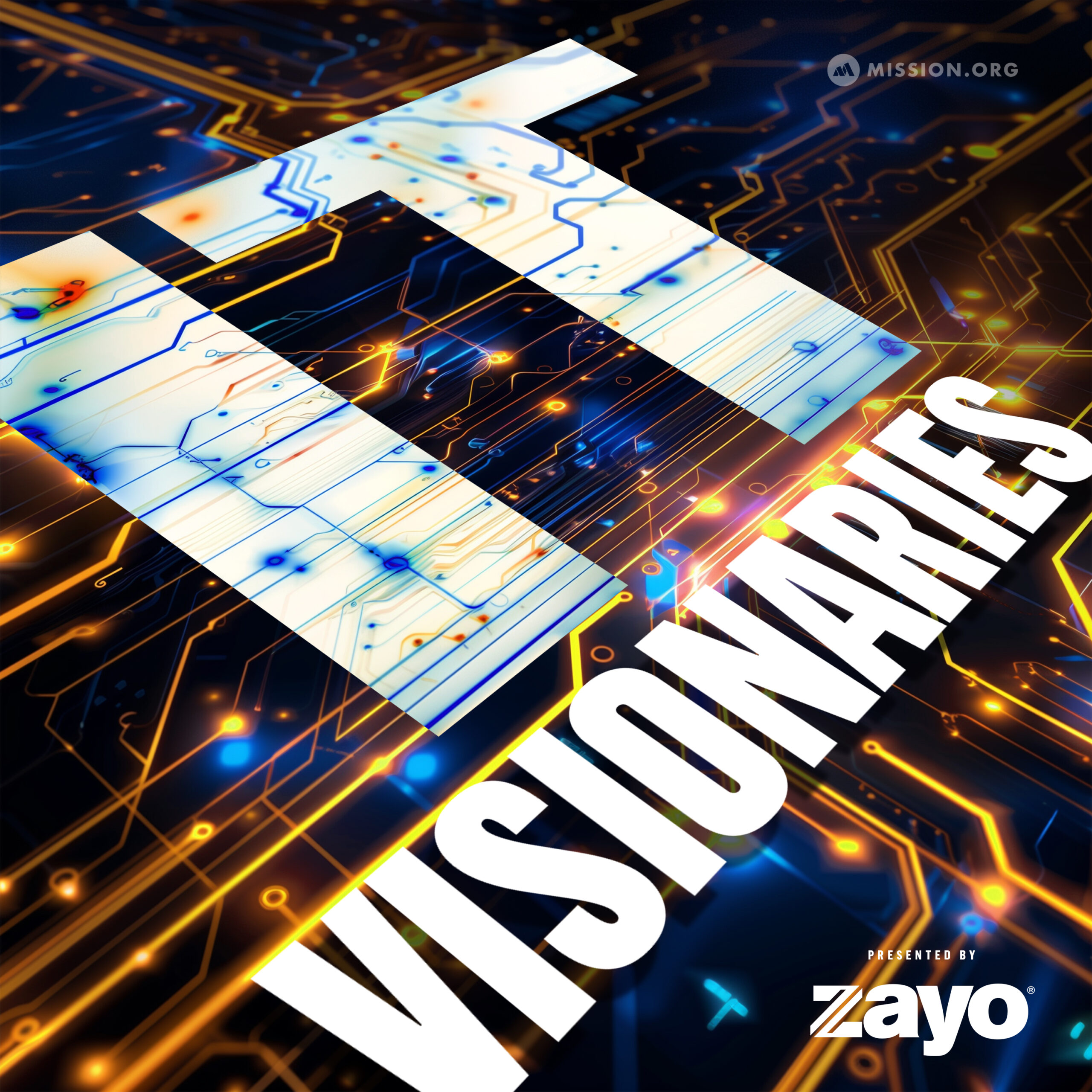Industrial equipment lasts for decades, and the data produced by these machines are invaluable to the organizations that rely on them. So what happens when industries that rely on industrial equipment, with on-location workers, and limited digital reliance face a pandemic and limited to no travel.
“I had a CEO of one of the big utilities [companies] telling me, he taught, given the last discussions he had with his leaders, that it would take five to six years to do digital transformation. When COVID started last year, they did a lot of what they thought would take five years in five weeks. It worked, so now the question is can you continue doing it?”
Colin Parris is the SVP and CTO of GE Digital, a billion dollar software division dedicated to creating better outcomes using the immense data produced by industrial machines.At GE, Coliin leads software, systems, and analytics teams to push the boundaries of how data can power industrial digital transformation. On this episode of IT Visionaries, Colin explains one of the ways GE Digital is transforming industries with their digital twins program. He explains exactly how digital twins is helping factories effectively predict the lifetime of machines, maintenance schedules, and predictive optimum yields all with an eye towards safety to ensure their plants stay up and running. Colin also touches on the importance of gathering data at the edge and the impact that kind of computing will have on efficiency.
Main Takeaways
- Measuring Success and Proving Value: Measuring success or measuring value from data and analytics is a difficult proposition. A best practice for measuring value is to set a baseline and make sure that you pick the right tool to advance your use case. Then you can measure that baseline to provide the value of those investments to gain the credibility to advance your analytics.
- It’s a Balancing Act: When you are measuring your data and setting baselines, you must be using both data at the edge and cloud-based data to predict the life expectancy of a system. When you manage data locally, you are consistently setting benchmarks with your local products, and then by sending that data to the cloud, you’re allowing your systems in other areas to use that data to then prevent potential problems.
- Industrial Problems: The two biggest issues currently facing the industrial industry right now are decarbonization, reducing a factory’s carbon footprint and cyber security, protecting that software that manages and runs their machines. The software that runs inside machines now must not only be able to predict when a machine might need maintenance, but that software must make sure the machine is not only safe and secure, but keeps it running efficiently in order to help it’s sustainability efforts.
For a more in-depth look at this episode, check out the article below.
Article
In 2020, most enterprises went through some sort of digital transformation. In order to stay competitive and relevant, companies were forced to rethink how they manage their teams, processes and technology.
“I had a CEO of one of the big utilities [companies] telling me, he taught, given the last discussions he had with his leaders, that it would take five to six years to do digital transformation. When COVID started last year, they did a lot of what they thought would take five years in five weeks. It worked, so now the question is can you continue doing it?”
Colin Parris is the SVP and CTO of GE Digital, and he’s at the head of GE’s transformation into one of the world’s foremost digital industrial companies. At GE, Coliin leads software, systems and analytics teams to push the boundaries of how data can power digital transformation and they are making a huge impact. On this episode of IT Visionaries, Colin explains one of the ways GE Digital is transforming industries: digital twins. Colin explains exactly how digital twin technologies are helping factories effectively predict the lifeline of machines to ensure their plants stay up and running, and also detect when they might require maintenance as well. Colin also touches on the importance of gathering data at the edge and the impact that kind of computing will have on efficiency.
With more than 22 years of experience as an executive at major divisions of IBM and GE, Parris took up his new role with GE Digital in May of 2020, just as the COVID-19 pandemic was in full stride and companies were trying to find a way to better harness their software to keep their plants safely running.
“GE digital is putting your industrial data to work for you,” Parris said.
One of the ways that GE Digital is putting that industrial data to work is through its digital twin technologies, which help predict when assets will require maintenance or notice when there might be a shift in the environment that could cause an asset to breakdown.
“[GE Digital] is taking data and trying to realize what’s the health of your process or your system,” Parris said. “An individual asset can give you enough information because there are specs that come out of that design and it tells you things like here’s how it should run. We can look at what is said against the actual data. So for instance, if the machine is running over the next year and a half, then the temperature sensors should see this.”
Parris said the data that is extracted from these technologies is then measured and tested against the recommended settings of how it should run. Once they have a benchmark of what the proper settings are, they can then see based on their benchmarks and software when a certain piece of equipment might be slipping.
“What you’re looking at is anomalies,” he said. “If it normally runs at this temperature and the expression is vibration and all of a sudden we see a change, we’ve got to ask ourselves, what does that change mean?”
GE Digital has software that monitors and tracks machinery all over the world, which can create some obstacles, Parris said. To manage some of these problems his team uses a hybrid model where they are not only monitoring their data at the edge, but also in the cloud.
“We have a variety of algorithms and processes that look at it in these timeframes,” he said. “You have a controlled system that runs either on the asset or in the plant itself, and what they’re trying to do is use analytics that run locally at the edge. What we call a digital twin, and it allows you to get early warnings of a problem. It allows you to continuously predict when you know what’s happening and it allows you to optimize a system.”
From there, once a problem has been identified and recorded at the edge, Parris said their software then uploads that information to the cloud so that their other factories and facilities can utilize that same information.
“It’s a combination of how you balance what you have at the edge and in the cloud in the way you do the work,” Parris said. “And that’s something that we’re living with now and growing because many people have seen digital transformation at a much quicker pace.”
To hear more about GE Digital’s software and digital twin technology check out the full episode
To hear the entire discussion, tune into IT Visionaries here.




